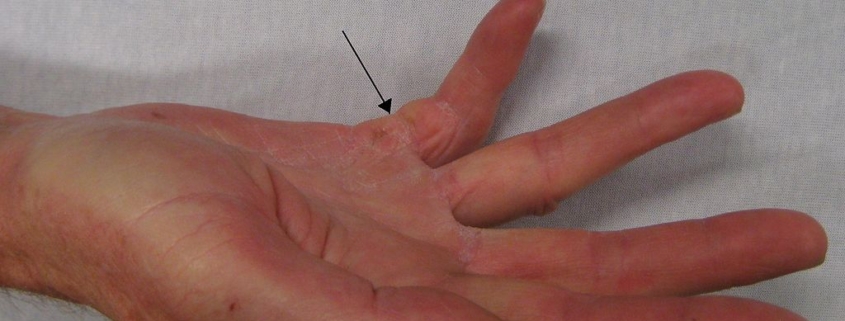
Dupuytren’s Contracture
Overview
Dupuytren’s Contracture is a hand condition that develops over years. The layer of tissue lying beneath the skin of your palm thickens and tightens, causing one or more fingers to bend towards the palm. When severe, it can limit the use of your hand.
This condition most commonly affects the ring finger and pinky, and occurs both in men and women, especially after the age of 50. Although it’s quite prevalent in families of Northern European descent, it can affect anyone.
Types
Dupuytren’s can be categorized into two types:
1. Less-Aggressive Dupuytren’s: Progression is slow and may never become problematic.
2. Aggressive Dupuytren’s: More common amongst diabetics and epileptics, this type progresses rapidly and might cause severe contractures.
Causes
The exact cause of Dupuytren’s contracture remains unknown but several factors may increase your risk. These factors include:
– Age: The condition is more common in people who are above 50.
– Sex: Men are more likely to develop the disease and often have more severe contractures.
– Ancestry: People of Northern European and Scandinavian descent are at an increased risk.
- Family history: Dupuytren’s often runs in families.
– Tobacco and alcohol use: Smokers and heavy drinkers are more prone as such habits might cause microscopic changes within blood vessels supplying the hand.
Symptoms
Early signs and symptoms of Dupuytren’s contracture typically include small, tender lumps, or nodules in the palm. As the disease progresses, the nodules can extend into cords of tissue, tightening and pulling your fingers towards your palm. Some common symptoms include:
– Difficulty straightening your fingers
– Inability to place your hand flat on a surface
- Difficulty grasping large objects
– Fingers pull towards the palm
– Presence of small bumps or nodules in the palm
Diagnosis
To diagnose Dupuytren’s contracture, a healthcare professional will review your symptoms and medical history. They will evaluate the hand, looking for characteristic signs such as thickened skin and bent fingers. In most cases, Dupuytren’s can be diagnosed just by physical examination. There’s rarely a need for lab tests or imaging.
Treatment Options
There is currently no cure for Dupuytren’s, but treatments can help slow its progression and relieve symptoms. Treatment usually isn’t necessary until the condition starts affecting your hand function. Options include:
– Medication: Injections of enzymes or steroids can weaken and break the tight cords pulling your fingers.
– Needling: A needle is inserted into the cord to break it, allowing straightening of fingers.
– Surgery: To remove the tissue in the palm affected by the disease. Most suitable for severe cases or rapid progression.
Living With Dupuytren’s Contracture
Living with Dupuytren’s involves careful management of the condition. Here are some tips:
– Following your doctor prescribed treatment plans diligently
– Regularly performing hand and finger exercises to maintain flexibility
– Avoiding activities that strain the hand, like carrying heavy bags
- If diabetic, ensuring that the blood sugar levels are well managed
When to Seek Help
You should seek medical attention if you notice changes in your hand such as having trouble extending your fingers or an increasing number of nodules. Although Dupuytren’s isn’t typically painful, if you’re experiencing significant discomfort, this also warrants a visit to the doctor.
Remember, early detection and management can slow the progress of Dupuytren’s Contracture, improving your quality of life.
